 "Abstraction allows man to see with his mind what he cannot physically see with his eyes... Abstract art enables the artist to perceive beyond the tangible, to extract the infinite out of the finite. It is the emancipation of the mind. It is an explosion into unknown areas." - Arshile Gorky
"Abstraction allows man to see with his mind what he cannot physically see with his eyes... Abstract art enables the artist to perceive beyond the tangible, to extract the infinite out of the finite. It is the emancipation of the mind. It is an explosion into unknown areas." - Arshile GorkyI have written about abstraction, at least as it applies to photography, a number of times on my blog. But always more implicitly rather than tackling the subject head-on; musings lurked in the background and served more as highlights and accents to the images rather than the main source of discourse. I've certainly posted more than a fair share of abstract images, since that is what my eye responds to most strongly. Indeed, my last three major projects were all heavily abstract: micro worlds, mystic flame, and glyphs. So abstraction is obviously on (and "in") my mind, quite strongly. But I'm not quite sure whether it's more my inner "I" or my outer "eye(s)" that is responsible for abstraction being such a deep rooted meta-pattern in me. So that's the subject of this post.
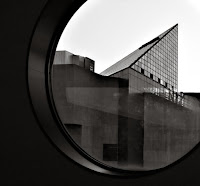 So, "What is an abstract photograph?" A simple (but far from complete) answer is that it is any image that does not depict anything that is "obviously" representational. By that I mean, whatever shapes and forms it appears to depict, none (or, at most, only a small subset) of them are obviously something that is recognizable; or, if it is recognizable, it is not uniquely so, as the shapes and forms can be interpreted in multiple self-consistent ways. This loose definition also allows for innately recognizable "objects" to be assembled (or composed) in an otherwise unrecognizable way (or that renders the collective unrecognizable as a whole).
So, "What is an abstract photograph?" A simple (but far from complete) answer is that it is any image that does not depict anything that is "obviously" representational. By that I mean, whatever shapes and forms it appears to depict, none (or, at most, only a small subset) of them are obviously something that is recognizable; or, if it is recognizable, it is not uniquely so, as the shapes and forms can be interpreted in multiple self-consistent ways. This loose definition also allows for innately recognizable "objects" to be assembled (or composed) in an otherwise unrecognizable way (or that renders the collective unrecognizable as a whole).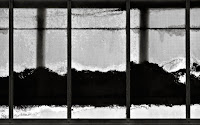 A recent editor's note in Photo Techniques magazine (by Jerry O'Neill, Nov/Dec 2008 issue) revealed that Google is about to embark on a massive image cataloging task, in which it is anticipated that upwards of a trillion images will be parsed and indexed according to their content, rather then (as done now) by label. While the methodology to be employed is naturally left unspecified and proprietary, undoubtedly it will consist of some kind of AI-assisted pattern recognition of specific features and rudimentary scene analysis (such as facial contours, buildings, trees, water, and so on). It will be interesting to see what technique the Google researchers have come up for recognizing and indexing abstract images; i.e., images that do not contain anything "obviously recognizable." Will there be primitive categories of tone, shape, and texture? (Which apply equally well, of course, to non-abstract images!) How will an ostensibly "obvious" head shot of a horse, say, differ in Google's catalog from another one in which the contours are deliberately cropped (focusing, say, only on the mane of hair) and facial features either blurred or photoshopped away, rendering the image all but unrecognizable? At what point will one type of image transition into another? Even more simply, beyond referencing an image as "abstract" (by what measure?), what finer distinctions will be made in that class, and how will they be defined?
A recent editor's note in Photo Techniques magazine (by Jerry O'Neill, Nov/Dec 2008 issue) revealed that Google is about to embark on a massive image cataloging task, in which it is anticipated that upwards of a trillion images will be parsed and indexed according to their content, rather then (as done now) by label. While the methodology to be employed is naturally left unspecified and proprietary, undoubtedly it will consist of some kind of AI-assisted pattern recognition of specific features and rudimentary scene analysis (such as facial contours, buildings, trees, water, and so on). It will be interesting to see what technique the Google researchers have come up for recognizing and indexing abstract images; i.e., images that do not contain anything "obviously recognizable." Will there be primitive categories of tone, shape, and texture? (Which apply equally well, of course, to non-abstract images!) How will an ostensibly "obvious" head shot of a horse, say, differ in Google's catalog from another one in which the contours are deliberately cropped (focusing, say, only on the mane of hair) and facial features either blurred or photoshopped away, rendering the image all but unrecognizable? At what point will one type of image transition into another? Even more simply, beyond referencing an image as "abstract" (by what measure?), what finer distinctions will be made in that class, and how will they be defined?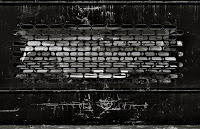 Google's laudable objective is to provide users with a way to find images according to what they innately depict, rather relying on someone else's depiction (via external label or reference) of what the images contains; and to do so automatically, by scanning the image itself. The problem, with both practical and philosophical components, is that the more abstract the image, the more difficult it becomes to distill it into a few simple features.
Google's laudable objective is to provide users with a way to find images according to what they innately depict, rather relying on someone else's depiction (via external label or reference) of what the images contains; and to do so automatically, by scanning the image itself. The problem, with both practical and philosophical components, is that the more abstract the image, the more difficult it becomes to distill it into a few simple features.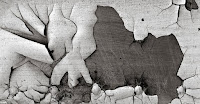 In some ways, this reminds me of an idea in theoretical computer science that has do with how one can tell whether a sequence of numbers, say, is random. The mathematically precise way of distinguishing random from nonrandom sequences, is that nonrandom sequences may always be compressed into something shorter than themselves; a random sequence cannot. Thus an otherwise infinite sequence that starts out and continues ad infinitum as "111011101110..." may be compressed by the much shorter (than infinite) description, "an infinite sequence of the symbol set 1110." In essence, one exploits an inherent pattern or symmetry, and uses that innate feature to compress information; or to more optimally express the information content. But a truly random sequence cannot be compressed into anything shorter. In order to communicate what the sequence is to someone else, one must exhaustively list each symbol that appears, for as long as patience permits.
In some ways, this reminds me of an idea in theoretical computer science that has do with how one can tell whether a sequence of numbers, say, is random. The mathematically precise way of distinguishing random from nonrandom sequences, is that nonrandom sequences may always be compressed into something shorter than themselves; a random sequence cannot. Thus an otherwise infinite sequence that starts out and continues ad infinitum as "111011101110..." may be compressed by the much shorter (than infinite) description, "an infinite sequence of the symbol set 1110." In essence, one exploits an inherent pattern or symmetry, and uses that innate feature to compress information; or to more optimally express the information content. But a truly random sequence cannot be compressed into anything shorter. In order to communicate what the sequence is to someone else, one must exhaustively list each symbol that appears, for as long as patience permits.
However, some special random sequences, like the digits of Pi=3.14159..., may yield to a compressed description, such as "sum this infinite series..."; which raises the intriguing question of whether there are "special" abstract images in art and photography that similarly yield to "simpler" distillations? One possibility is that while some abstract images in the sense defined above are "random" (in a mathematical sense) and therefore are generally unyielding to distillations, there are also those that - despite not depicting any obviously recognizable thing - nonetheless evoke (in some quasi universal way that depends on the viewer's cultural background, for example) some obviously recognizable feeling (or a subliminal mood). A long time-exposure of waves in the ocean far from shore may not at all be "obviously long time-exposures of waves" (and thus not easily conducive to simple distillations: I wonder how Google's indexing will handle this case?), but may evoke very similar emotional responses in different people. An aesthetic compression based on evoked emotion rather than on the objective content may be much more useful in such cases. On the other hand, some other abstract, one that is perhaps created very artistically using some clever combination of light and shadow, may neither depict anything "obviously recognizable" nor evoke any universally shared feeling. A multiple exposure of a dozen separate shots, each of which is itself an "abstract" might be an example. I'd also be interested to learn how Google will handle such examples.
 As for the philosophical dimension of abstraction, at least for me as a photographer, I tend to use abstraction in the classical (Alfred) Stieglitzian way; i.e., as "equivalents" of my inner emotional or cognitive states. Of course, I fully understand that there is a much greater chance that the viewer will not respond to an image in a way that mirrors my inner state when I created it than that the image conveys to the user what I really felt when I pressed the shutter. There are simply too many variables impossible to account for or control. But it is also often true (at least for me) that it is impossible to convey the feelings I have about a subject or scene without resorting to abstraction. It is certainly not true in all cases (sometimes a red barn is exactly what I need to express the beauty of redness). But as I grow as a photographer, and experiment with new techniques and ideas for projects, I am finding my artistic path moving ever more deeply into the abstract part of the aesthetic forest.
As for the philosophical dimension of abstraction, at least for me as a photographer, I tend to use abstraction in the classical (Alfred) Stieglitzian way; i.e., as "equivalents" of my inner emotional or cognitive states. Of course, I fully understand that there is a much greater chance that the viewer will not respond to an image in a way that mirrors my inner state when I created it than that the image conveys to the user what I really felt when I pressed the shutter. There are simply too many variables impossible to account for or control. But it is also often true (at least for me) that it is impossible to convey the feelings I have about a subject or scene without resorting to abstraction. It is certainly not true in all cases (sometimes a red barn is exactly what I need to express the beauty of redness). But as I grow as a photographer, and experiment with new techniques and ideas for projects, I am finding my artistic path moving ever more deeply into the abstract part of the aesthetic forest.
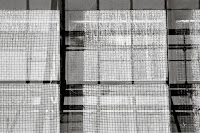
abstract art make us to think again whats its mean from different side,im so glad if you would like to visit my blog too..
ReplyDelete"I am finding my artistic path moving ever more deeply into the abstract..."
ReplyDeleteThis sounds very like my sense of my own development so far. But I sometimes wonder if it's just a stage of seeing something beyond the mountains and rivers, and later I'll come to see mountains as simply mountains, rivers as rivers.
Your images are wonderful in being both representational and abstract at the same time.